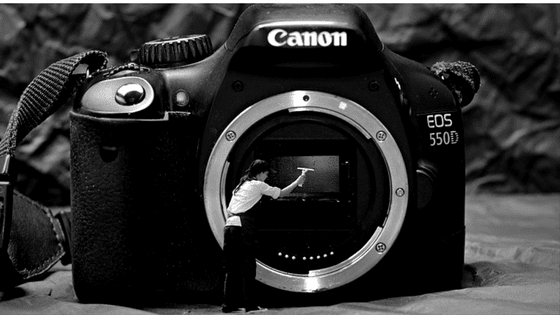Whether it’s the first course you’ve created online, or your 1000th, there’s nothing quite like creating something that has the potential for millions of people to access and benefit from.
Despite the excitement of this prospect, it can also incite fear and overwhelm into a course creator and freeze them in their tracks. So much to learn, so much to do, so much to connect together and so many course creation mojo-killing thoughts whizzing around their heads and making it all seem like just a little bit too much.

In this article, Edupreneur of 11 years, Sarah Cordiner, will share 5 tips to help reduce the risk of overwhelm during your course creation process.
-
Don’t let the amount of content overwhelm you
Most edupreneurs and course creators that I work with don’t have the problem of not having enough content; usually they have too much. One of the biggest problems that we have to solve is not what needs to be added to our courses, but actually what needs to be taken out. So how do we solve this?
- Go back to your learning outcomes – if a piece of information does not directly help the learner obtain the learning outcome, then leave it out.
- Break it down into its smallest parts. The brain can only process so much at a time. Rather counter intuitively, the smaller the course is, the more effective it is and the higher the completion rates are going to be.
- Decide whether your program will be better if you actually make multiple mini-courses instead of one huge course. It also provides more options from a pricing perspective.
- Create an ‘appendices’ or ‘bonus’ section in each course that houses all of the extra content.
- Cut the text down. Replacing your long form text files with checklists, bullet point lists and simple cheat sheets. This will be far more useful and consumable to your learners.
Don’t feel like you have to cram an entire lifetime worth of knowledge and expertise into one course – save some for other courses too.
-
Avoid being overwhelmed by how much there is to do
When we see a beautiful painting, it is difficult to imagine all of the the miniscule steps, brush strokes and stages that went into creating it. All we see is the end result and assume that the artist sat down with a paint brush, and voila, it was done.
Similarly, many online course creators think that they have to paint a Picasso from the first stroke and then feel completely overwhelmed when each stroke uncovers yet another skill that they don’t have yet.
Don’t focus so much on the finished piece that getting there seems almost impossible. Remind yourself to break every single tiny stage down into micro steps; into easy, manageable, achievable little actions and tick off your progress each time a little step is completed.
-
Create actionable tasks
I created an activity years ago when I was teaching goal setting. It’s all about illustrating the power of breaking up a big task into the smallest parts. I call it the ‘Draw a Dragon Technique.’
It’s simple – I ask my class to draw a dragon purposely without giving them any instructions whatsoever. Expectedly, all of the dragons come out looking completely different. Some have angry dragons, some are happy, some are cartoon like. Some have gone for a realistic approach, some have done facial close ups and others have included the entire dragon body. Some pictures look like a spider got drunk, fell in an inkwell and ran around on their page. At this stage there is always an interesting vibe of mixed emotions hanging in the air.
This is because I set them a task without addressing their existing (or non-existent) artistic abilities. I also gave them no road map as to how to get there, didn’t tell them where the major milestones were. Nor did I signal what the progress milestones looked like. I also gave them no benchmark or criteria as to what the finished piece needed to look like. With that in mind, it’s pretty obvious that we get a room full of more frustration, distress and strife, than of driven, focused results.
Next I give everyone a new piece of paper and ask them to follow me one line at a time. I cannot be assured that everyone in the room is a natural artist, nor do I have time to train them to be. However, I know that I can teach them how to draw a straight line. And once I’ve taught them that, I know I can teach them to put 3 together to make a triangle. Line by line and triangle by triangle, everyone in the room ends up with a picture of a dragon that all look very similar to each other.
When I ask the class how that went the second time around, the solid response every time is a resounding ‘easy’; ‘So simple my kid could do that, and I could show them how.’ The mood in the room is palpably different. I look at the group who are admiring their pictures proudly, quite surprised at how something so easy could produce a result that was far better than the first attempt they made.
If we go to a blank page and try to jump straight to the end result, we will suffer immediate overwhelm. The journey isn’t clear, our brain cannot fathom how it will get there and we start displaying numerous types of ‘avoid this’ behaviour. It is impossible to jump from starting to write a book, to having a whole book complete, without having to write it one letter at a time.
We need to break down our goal or task down so that we can train our brain to not see the entire novel that needs writing, but simply just the next letter.
Break every element of your course creation down into its smallest part so that it becomes a step by step journey. Suddenly course creation doesn’t seem like such a mountain to climb.
-
Controlling a large to-do list
Another thing that can cause overwhelm is the existence of a really big to-do list. This is why I like to draw out a journey or a map instead of a massive long list that will just make me feel like I’m in a race that I can never win.
I like to get post-it notes to begin with and brain-dump every task I can think of, then stick them up on the wall in order of what needs to be done first from left to right – a simplified project plan or timeline so to speak.
This can really help you see exactly what steps you need to take next to move along that timeline, and very easily see yourself progressing along it, instead of feeling like you are getting nowhere on an ever-growing to-do list. Time to create your timeline and obliterate the overwhelm!
Final thoughts:
Whether you have too much content, a task too big for yourself or your students, or just a to-do list that seems to stretch into the sunset, remember these steps to defeat the overwhelm that often accompanies course creation.
If you would like to ‘Awaken Your Course Creation Mojo’, do check out my latest book which will be sure to help you beat procrastination and fire up your course creation motivation.



















